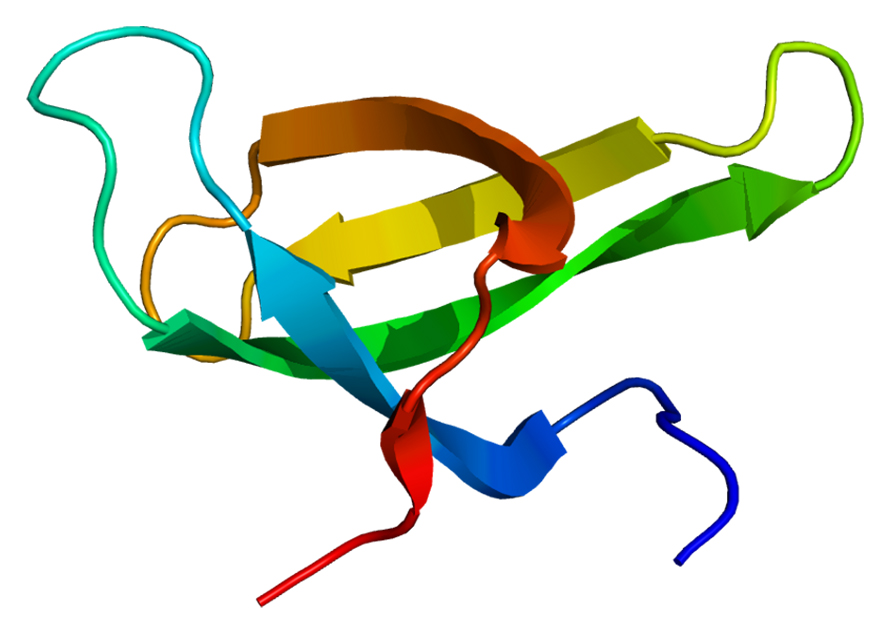Study sheds light on treatment for rare genetic disorder
A new study from researchers in the University of Wisconsin–Madison Department of Biochemistry reveals key insights into how a therapeutic drug tackles a deadly genetic disease and opens doors to additional research. Their findings are published in Nature Communications.
Until recently, babies born with the most severe forms of spinal muscular atrophy (SMA) rarely survived past early childhood. The disorder, while rare, is the most common genetic cause of death in infants.

SMA results from errors in production of the survival of motor neuron (SMN) protein. SMA affects nerve cells responsible for voluntary muscle movement, including respiratory muscles, causing the muscles to shrivel and become inactive.
Relatively new drugs such as branaplam, nusinersen (Spinraza), and risdiplam (Ecrysdi) are giving hope to children born with SMA. Some children with SMA and treated with nusinersen (the first FDA approved SMA treatment, which acts by binding to a region of the survival of motor neuron RNA) are now approaching adolescence. Risdiplam and branaplam, which have also been studied for treating SMA, change how the cell cuts and pastes the RNA — part of a process known as splicing — so it can make a functional SMN protein.
“Risdiplam and branaplam represent fairly new types of medical therapies directed to act on RNA,” explains Aaron Hoskins, a professor in the UW–Madison Department of Biochemistry who specializes in RNA splicing and the factors at play when splicing goes awry. “They’re able to change RNA processing at very particular sites and in very defined ways. This wouldn’t have been possible 15 years ago, so there are kids alive today who could never have survived before.”
Branaplam was developed to interact with RNA’s nucleic acid building blocks. But despite the drug’s life-saving capabilities, exactly how branaplam and related drugs address errors in RNA splicing has eluded researchers. The RNAs and factors involved in splicing are complex and difficult to study.
Hoskins partnered with Remix Therapeutics, a pharmaceutical company that develops RNA-targeting drugs such as branaplam, to study branaplam’s impact on RNA splicing. “A major focus of my lab has been understanding splice site recognition — the exact step where these therapies work. Remix and my lab had highly complementary approaches to science, so it was natural for us to work together on this,” says Hoskins, who is also a member of the scientific advisory board at Remix Therapeutics.

In their recent study, Hoskins and David White (a former member of the Hoskins Lab) worked alongside Bryan Dunyak and Fred Vaillancourt, scientists at Remix. They discovered that branaplam does not, as previously believed, directly target RNA. Instead, the drug targets a complex made of both RNA and protein. In the absence of that protein, the drug only weakly associates with RNA, likely explaining the results of earlier research.
In the short time since their discovery, results have already opened new possibilities for further study and drug development of branaplam and related therapeutics. The team is continuing to work on understanding how these drugs are able to target specific sites, such as the SMN gene, rather than randomly effecting RNA splicing.
Hoskins hopes that this research will pave the way for new, increasingly effective therapeutics to treat SMA and other illnesses such as Huntington’s disease, which could also be treated with RNA-targeting drugs. “I imagine we’ll be applying this to other new molecules and drug candidates. The available drugs are limited now, but this industry-academic collaboration is a step towards finding more therapeutic options for people with deadly genetic diseases.”
This article is republished from the University of Wisconsin-Madison Department of Biochemistry News. Read the original here.
Enjoy reading ASBMB Today?
Become a member to receive the print edition four times a year and the digital edition monthly.
Learn moreGet the latest from ASBMB Today
Enter your email address, and we’ll send you a weekly email with recent articles, interviews and more.
Latest in Science
Science highlights or most popular articles

Bacteriophage protein could make queso fresco safer
Researchers characterized the structure and function of PlyP100, a bacteriophage protein that shows promise as a food-safe antimicrobial for preventing Listeria monocytogenes growth in fresh cheeses.

Building the blueprint to block HIV
Wesley Sundquist will present his work on the HIV capsid and revolutionary drug, Lenacapavir, at the ASBMB Annual Meeting, March 7–10, in Maryland.

Gut microbes hijack cancer pathway in high-fat diets
Researchers at the Feinstein Institutes for Medical Research found that a high-fat diet increases ammonia-producing bacteria in the gut microbiome of mice, which in turn disrupts TGF-β signaling and promotes colorectal cancer.

Mapping fentanyl’s cellular footprint
Using a new imaging method, researchers at State University of New York at Buffalo traced fentanyl’s effects inside brain immune cells, revealing how the drug alters lipid droplets, pointing to new paths for addiction diagnostics.

Designing life’s building blocks with AI
Tanja Kortemme, a professor at the University of California, San Francisco, will discuss her research using computational biology to engineer proteins at the 2026 ASBMB Annual Meeting.

Cholesterol as a novel biomarker for Fragile X syndrome
Researchers in Quebec identified lower levels of a brain cholesterol metabolite, 24-hydroxycholesterol, in patients with fragile X syndrome, a finding that could provide a simple blood-based biomarker for understanding and managing the condition.

